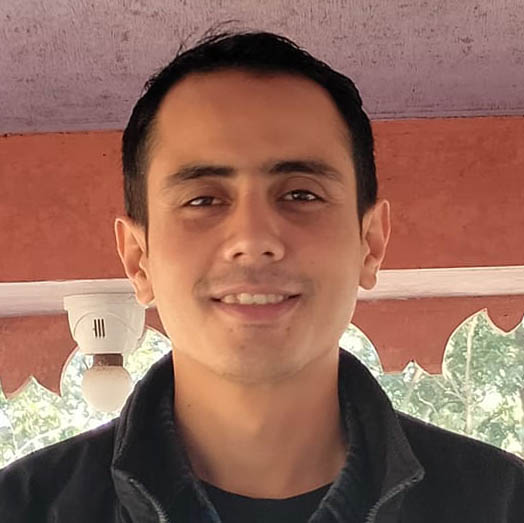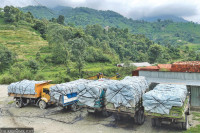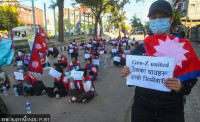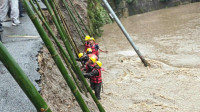Valley
‘Govt should rebuild heritage’
The head of the committee formed to recommend reconstruction approaches for damaged cultural heritages in the country has suggested against calling tenders for reconstruction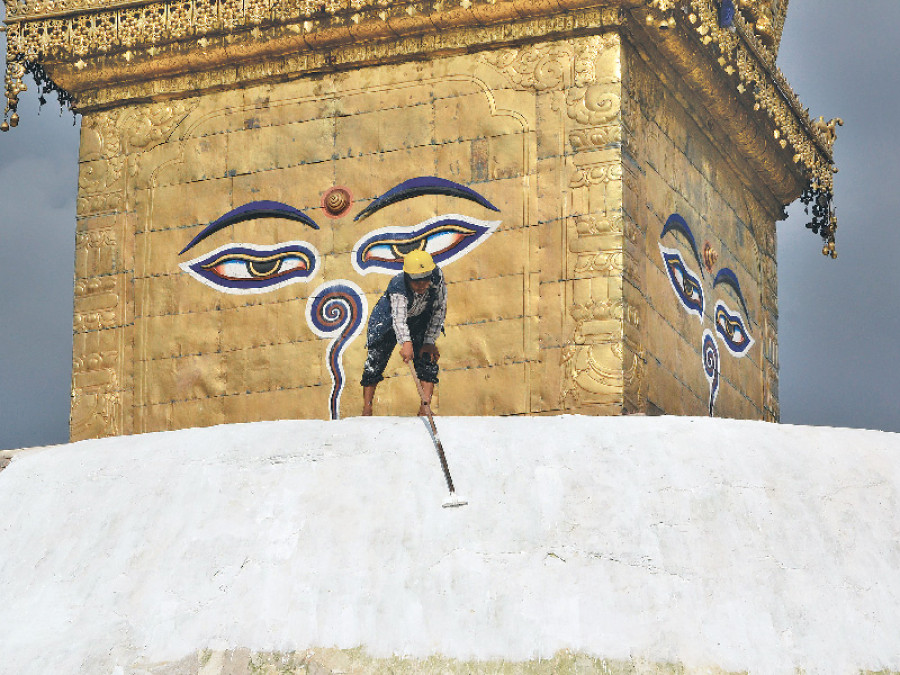
Gaurav Thapa
The head of the committee formed to recommend reconstruction approaches for damaged cultural heritages in the country has suggested against calling tenders for reconstruction and instead said works should be carried out under direct supervision of concerned government agencies.
Former chief of the National Archives of Nepal and heritage conservationist Bhim Prasad Nepal said that private contractors are not expected to comprehend historical and cultural value of the monuments which may hamper their originality, sensitivity and authenticity. “Department of Archaeology or Kathmandu Metropolitan City is the proper body to lead reconstruction,” he said.
Nepal’s recommendation comes amid talks of handing over rebuilding heritage sites to private companies. Several organisations have come out publicly calling the government to entrust them with reconstructing earthquake-damaged monuments especially the iconic Dharahara tower.
DoA had earlier formed two committees with 12 members in total including geologists and geotechnical engineers to assess damages in the cultural heritages and decide reconstruction modality. A team led by Premnath Maskey is evaluating damages while a team under Nepal is studying approaches to reconstruction. The two committees are scheduled to submit their reports in a week’s time but Nepal said the report will be delayed as reconstruction is complicated and opinions are varied.
All of Valley’s seven sites which were included in the World Heritage List in 1979 for their archaeological, historical, cultural and religious significance had sustained damage in the April 25 earthquake. Among them Swayambhunath stupa, Changu Narayan temple, and the Durbar Squares of Basantapur, Patan and Bhaktapur have suffered considerable damage with many structures reduced to rubble. In comparison, two other heritage sites-Boudhanath stupa and Pashupatinath temple-are largely intact.
“Nowhere in the world is reconstruction and preservation of heritage sites entrusted to private contractors,” Nepal said. “Reconstruction, in itself, is a research into the site’s design and significance and many issues may come up during the process. Private companies are not obligated to remodel their approach as per new developments as they carry out their project based on fixed designs and budget.”
Nepal also said that priority should be placed on repairing partially damaged monuments and preserving safe ones rather than on dismantling damaged structures and rebuilding them from scratch. Most of Nepal’s views are to be incorporated in his report which will be the basis of reconstruction.
‘90 percent work in five years’
Director General of DoA Bhesh Narayan Dahal has said that they have targeted to complete 90 percent of rebuilding works for the seven world heritage sites in the Valley in five years and are preparing to call a tender for the purpose before Dashain.
“We are on a war footing to assemble a team of experts, hire skilled manpower and procure essential materials to begin reconstruction,” Director General of Department of Archaeology Bhesh Narayan Dahal said. “Our target is to complete substantial part of reconstruction within the time frame,” he added without specifying which works will be prioritised.
According to Dahal, Kathmandu Valley Preservation Trust will help in preserving the palaces while Timber Corporation of Nepal has pledged to provide timber to DoA. He said that the department is in process to procure specially designed Dachi Appa, Ma Appa and Ku Appa bricks from brick kilns which have committed to prepare 700,000 bricks within a year.
In addition, Bhaktapur-based Khwopa College has trained more than 350 masons for reconstruction and the department has planned to train more masons and carpenters. DoA has already communicated with traditional sculptor communities of Lalitpur, Bhaktapur and Banepa to repair damaged statues. Further, Dahal said that the department will hire 50 architects and 25 civil engineers to aid in their mission.
Donors pledge reconstruction aid
Dahal has said that reconstruction should go smoothly and should be complete in time as several countries have pledged aids for rebuilding the heritage sites and other monuments.
The Sri Lankan government has pledged Rs250 million to rebuild the Bungmati temple and the Rato Macchindranath temple in Lalitpur and the Anandakuti Vihar in Swayambhu, according to Dahal.
Dahal added that the Chinese government is in process to sign an agreement with the Finance Ministry to help fund reconstruction and preservation of the Nautale Durbar at Basantapur and the Sattale Durbar and nearby monuments in Nuwakot.
India has also sent a proposal to help in reconstructing monasteries in Khokana, Bungmati, Sankhu, Swayambhunath, Gorkha, Nuwakot, Rasuwa, Manang and Mustang while the German government’s international development wing German Corporation for International Cooperation is in process to help reconstruct damaged monuments in Bhaktapur, Dahal said.
According to the DoA, a total of 750 historical, cultural and religious monuments in 20 districts were damaged by the Great Earthquake and its aftershocks. Among them, 133 have been completely destroyed while 617 have sustained partial damage. An estimated Rs20.56 billion will be required to rebuild the damaged monuments, according to the Post-Disaster Needs Assessment report prepared by the National Planning Commission.
“All preservation and reconstruction works will be supervised by the Department and will follow preset designs so as to keep their significance intact,” Dahal said.




 18.12°C Kathmandu
18.12°C Kathmandu